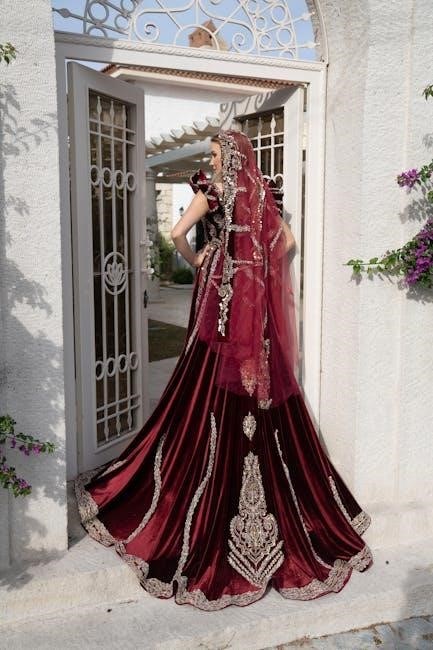
The Art of Marriage PDF is a timeless guide exploring the essence of a successful marriage‚ emphasizing that happiness is not automatic but must be intentionally cultivated through effort‚ communication‚ and mutual respect.
Overview of the Document
The Art of Marriage PDF is a comprehensive guide that explores the fundamental principles of building and maintaining a successful marriage. It emphasizes the importance of commitment‚ communication‚ and mutual respect‚ highlighting that a fulfilling marriage requires intentional effort and dedication. The document offers practical advice on nurturing love‚ resolving conflicts‚ and fostering intimacy‚ while also delving into the psychological and emotional aspects of relationships. By combining philosophical insights with real-life examples‚ it provides a holistic understanding of marriage‚ making it a valuable resource for couples seeking to strengthen their bond and create a lasting partnership.
Significance of the Topic in Modern Relationships
The Art of Marriage PDF remains a vital resource for modern couples‚ offering timeless wisdom on nurturing relationships amidst today’s challenges. In an era dominated by fast-paced lifestyles and digital communication‚ the document’s focus on commitment‚ empathy‚ and mutual understanding resonates deeply. It addresses the evolving dynamics of marriage‚ providing practical insights to navigate issues like work-life balance and technological influences. By emphasizing the importance of intentional effort and emotional intelligence‚ the guide helps couples build resilient‚ fulfilling partnerships‚ making it a cornerstone for strengthening modern relationships and fostering lasting love and connection in an ever-changing world.

Key Themes in “The Art of Marriage”
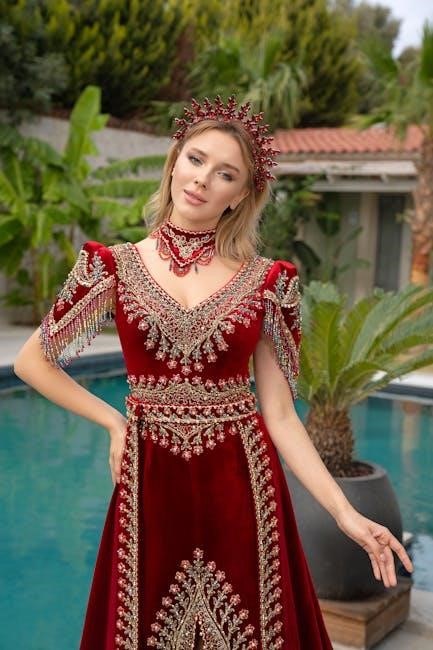
The Art of Marriage PDF explores essential themes like commitment‚ communication‚ and mutual respect‚ emphasizing their role in building a strong‚ enduring relationship.
These principles guide couples in fostering trust and understanding‚ ensuring a harmonious and fulfilling marriage.
Commitment and Dedication
Commitment and dedication form the foundation of a lasting marriage‚ as emphasized in “The Art of Marriage PDF.” These values ensure that partners remain steadfast through life’s challenges‚ fostering trust and stability. Dedication involves consistent effort to prioritize the relationship‚ even when obstacles arise. By nurturing these qualities‚ couples build a resilient bond‚ creating a sanctuary of love and support. Peterson highlights that commitment is not passive but an active choice to honor and cherish one another daily‚ ensuring a marriage endures through time. This mindset is central to achieving a fulfilling and harmonious partnership. It requires intentional effort and unwavering loyalty from both partners.
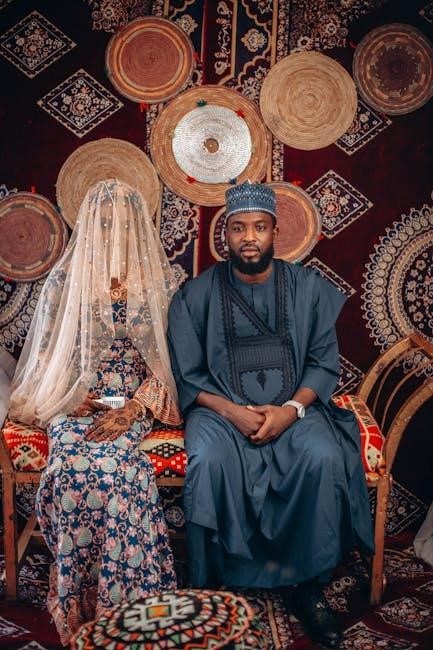
Communication in Marriage
Effective communication is the cornerstone of a thriving marriage‚ as highlighted in “The Art of Marriage PDF.” It involves active listening‚ empathy‚ and clarity in expressing feelings. When both partners communicate openly and honestly‚ misunderstandings are minimized‚ and emotional bonds are strengthened. Peterson emphasizes that communication is not just about speaking but also about truly hearing and understanding each other. By fostering an environment of transparency and respect‚ couples can navigate life’s challenges together‚ building a deeper and more meaningful connection. Regular‚ heartfelt conversations are essential for sustaining a healthy and fulfilling relationship over time.
Understanding and Mutual Respect
Understanding and mutual respect are foundational pillars in “The Art of Marriage PDF‚” fostering harmony and empathy between partners. Recognizing each other’s perspectives and values creates a safe space for open dialogue and emotional connection. Peterson underscores the importance of respecting individuality while nurturing unity. When both partners feel heard and appreciated‚ conflicts are resolved more gracefully‚ and trust deepens. Cultivating mutual respect ensures that love and companionship flourish‚ even amidst life’s challenges. This principle‚ rooted in empathy and kindness‚ is essential for building a lasting and fulfilling marriage.
The Origin and Evolution of the Concept
Historical Background of Marriage as an Institution
Marriage‚ a cornerstone of human society‚ has deep roots in cultural and legal systems‚ evolving from ancient customs to modern contractual unions‚ forming the foundation of families and communities.
Marriage‚ as an institution‚ has evolved significantly over centuries‚ originating from ancient customs and legal frameworks. Early societies viewed marriage as a union for procreation‚ property consolidation‚ and social stability. Ancient civilizations‚ such as Mesopotamia and Rome‚ formalized marriage through contracts‚ emphasizing duty and longevity. Over time‚ religious influences reshaped marriage‚ introducing moral and spiritual dimensions. The modern concept of marriage as a romantic partnership emerged in the Enlightenment‚ blending love‚ equality‚ and mutual respect. These historical developments laid the groundwork for understanding marriage as a dynamic‚ evolving institution central to human relationships and societal structures.
How the Concept of Marriage Has Evolved Over Time
The concept of marriage has undergone remarkable transformation‚ shifting from a primarily practical arrangement to a deeply personal partnership. Early marriages often served communal or familial interests‚ focusing on property and lineage. The Industrial Revolution brought changes‚ with urbanization and education fostering individual choice. The 20th century introduced romantic love as a central tenet‚ alongside growing gender equality. Modern marriages emphasize emotional connection‚ mutual respect‚ and shared goals. Legal recognition of diverse unions has further redefined marriage‚ reflecting societal progress toward inclusivity and personal freedom. This evolution mirrors broader cultural shifts‚ highlighting marriage as a dynamic‚ ever-adapting institution.
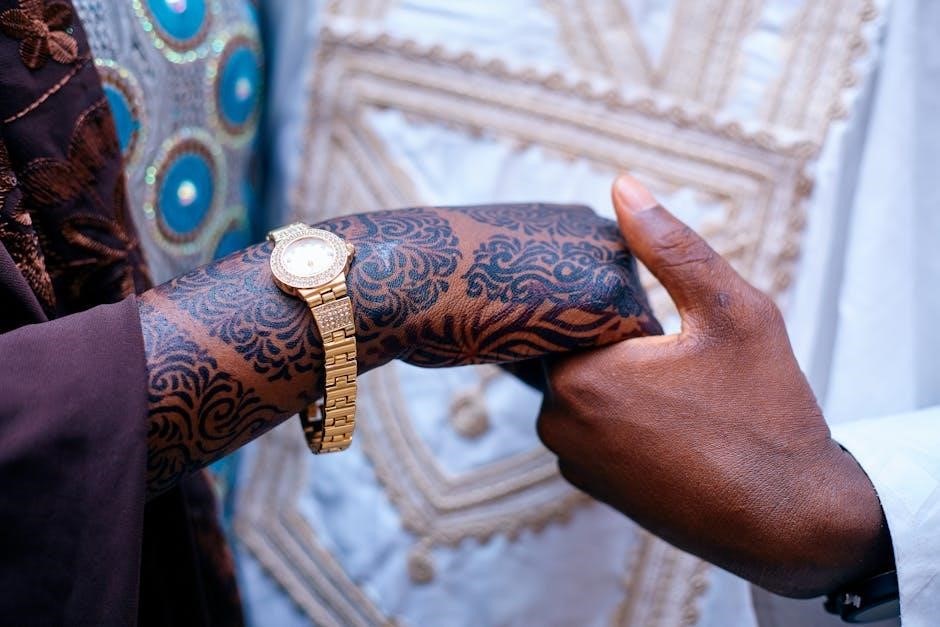
The Author’s Perspective
Wilferd Arlan Peterson emphasizes that marriage is a journey of intentional effort‚ highlighting the importance of small‚ consistent actions to build lasting love and mutual understanding.
Wilferd Arlan Peterson: Biography and Contributions
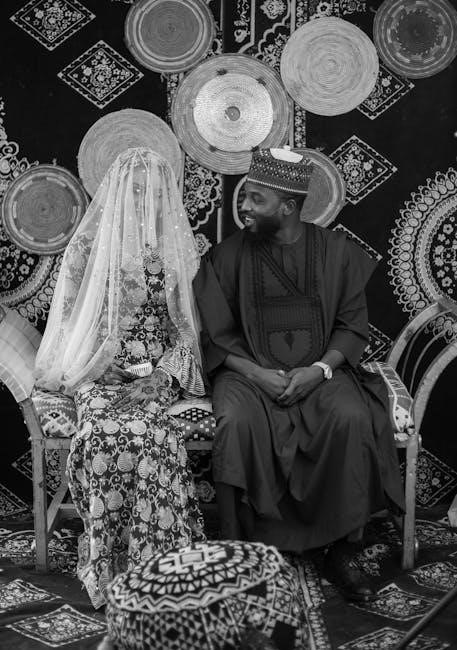
Wilferd Arlan Peterson was an American author and motivational speaker known for his insights on marriage and relationships. His work‚ particularly The Art of Marriage‚ has inspired countless couples by emphasizing the importance of small‚ consistent actions and mutual respect in building a lasting partnership. Peterson’s contributions focus on fostering understanding and love‚ making his writings a timeless resource for nurturing relationships. His approach remains widely appreciated for its simplicity and depth‚ offering practical advice that resonates across generations.
The Inspiration Behind “The Art of Marriage”
Wilferd Arlan Peterson drew inspiration from his observations of successful marriages and the universal challenges couples face. His military service and interactions with diverse individuals shaped his understanding of relationships. Peterson believed that the foundation of a strong marriage lies in everyday actions—small gestures‚ consistent effort‚ and unwavering commitment. His philosophy emphasizes mutual respect‚ open communication‚ and nurturing love. This timeless approach‚ reflected in The Art of Marriage‚ continues to resonate with couples seeking enduring partnerships. His work remains a heartfelt guide to fostering meaningful connections in an ever-changing world.
Practical Advice for a Successful Marriage
- Nurturing love and affection through small‚ consistent gestures.
- Mastering effective communication to resolve conflicts peacefully.
- Maintaining emotional and physical intimacy to keep the relationship fresh.
Nurturing Love and Affection
Nurturing love and affection in marriage requires intentional effort and mindfulness. Small gestures‚ like holding hands or saying “I love you‚” are vital for maintaining emotional closeness. shared moments of joy‚ gratitude‚ and vulnerability strengthen the bond between partners; Peterson emphasizes that happiness in marriage is not automatic but must be cultivated through consistent care and affection. By prioritizing quality time and meaningful interactions‚ couples can foster a deep and enduring connection‚ ensuring love remains a vibrant force in their relationship. This approach creates a foundation of trust‚ warmth‚ and mutual appreciation.
Resolving Conflicts and Disagreements
Resolving conflicts requires empathy‚ understanding‚ and effective communication. Peterson suggests that disputes should not be viewed as battles but as opportunities to strengthen the relationship. Active listening and expressing feelings calmly foster mutual respect. Both partners must seek solutions together‚ prioritizing unity over being right. Forgiveness and compromise are essential for healing and moving forward. By addressing issues constructively‚ couples can transform disagreements into moments of growth‚ reinforcing their bond and fostering a deeper understanding of each other’s needs and perspectives. This approach ensures conflicts become stepping stones for a stronger‚ more resilient marriage.
Maintaining Intimacy and Connection
Maintaining intimacy and connection requires intentional effort and emotional closeness. Peterson emphasizes the importance of small‚ thoughtful gestures—like holding hands or surprise acts of kindness—to nurture love. Regular‚ meaningful conversations and shared experiences strengthen the bond between partners. Emotional intimacy is cultivated through vulnerability‚ trust‚ and mutual appreciation. Physical connection should complement this emotional closeness‚ fostering a deeper sense of unity. By prioritizing quality time and affectionate interactions‚ couples can keep the spark alive‚ ensuring their relationship remains vibrant and fulfilling over time. These practices create a foundation for enduring intimacy and connection in marriage.
Real-Life Examples and Case Studies
The document highlights historical marriages‚ like King Edward VIII and Wallis Simpson‚ and modern couples who embody the art of marriage‚ illustrating enduring love and commitment through real-life examples.
Historical Marriages That Embody the Art of Marriage
Historical marriages‚ such as that of King Edward VIII and Wallis Simpson‚ exemplify the art of marriage through their unwavering commitment and love‚ despite societal challenges. These unions highlight perseverance‚ mutual respect‚ and the enduring power of true partnership‚ as discussed in The Art of Marriage PDF. Such examples serve as timeless inspiration‚ showcasing how couples can navigate life’s complexities while maintaining a deep‚ unshakable bond‚ reflecting the core principles outlined in the document.
Modern-Day Couples Who Exemplify Successful Marriages
Modern couples‚ such as those highlighted in Catherine Blythe’s work‚ exemplify successful marriages by embracing commitment‚ communication‚ and mutual respect. These partnerships‚ often inspired by The Art of Marriage PDF‚ demonstrate how contemporary relationships can thrive through emotional intelligence and shared values. By prioritizing intimacy‚ resolving conflicts constructively‚ and nurturing affection‚ these couples embody the timeless principles of a fulfilling marriage‚ proving that the art of marriage remains relevant in today’s fast-paced world‚ even amidst challenges like social media and work-life balance.
Cultural and Religious Perspectives
Cultural and religious traditions deeply influence marital values‚ with practices varying widely across societies. Marriage rituals‚ roles‚ and expectations are shaped by faith and heritage‚ reflecting diverse norms and beliefs globally.
Marriage in Different Cultures and Traditions
Marriage practices vary widely across cultures‚ reflecting unique rituals‚ customs‚ and values. In some cultures‚ elaborate ceremonies and symbolic gestures are central‚ while others emphasize communal celebrations. African traditions often involve vibrant dances and exchanges of gifts‚ while Asian cultures may incorporate sacred rituals and ancestral honors. Western societies frequently blend religious and secular elements. Each tradition underscores the significance of unity‚ commitment‚ and familial bonds. These diverse practices highlight the universal importance of marriage as a celebration of love and partnership‚ shaped by cultural heritage and shared human values.
The Role of Religion in Shaping Marital Values
Religion profoundly influences marital values‚ offering moral frameworks and spiritual guidance. Many faiths emphasize commitment‚ fidelity‚ and unconditional love‚ viewing marriage as a sacred covenant. Religious teachings often provide principles for resolving conflicts and nurturing mutual respect. Ceremonies and rituals‚ such as Christian weddings or Hindu sacraments‚ reinforce these values. Scripture and religious leaders serve as sources of wisdom‚ helping couples navigate challenges. By integrating faith into daily life‚ couples strengthen their bond and foster a deeper understanding of their union’s purpose. Religion thus plays a pivotal role in shaping enduring‚ values-driven marriages.

Psychological Aspects of Marriage
Psychological aspects of marriage involve understanding the dynamics of love‚ attachment‚ and emotional intelligence. A healthy marriage requires compatibility‚ trust‚ and mutual understanding to foster a fulfilling relationship.
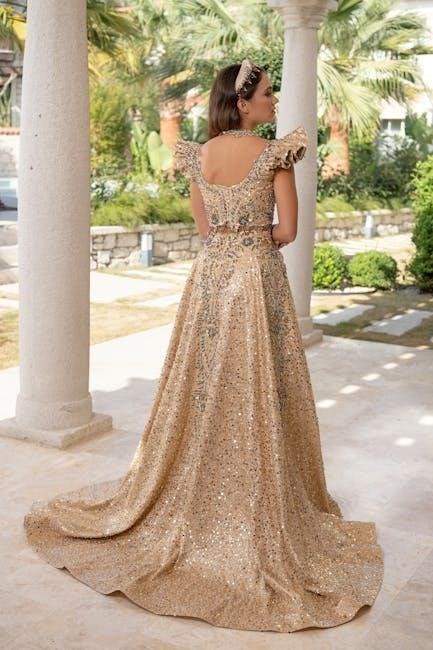
The Psychology of Love and Attachment
The psychology of love and attachment plays a crucial role in marriage‚ shaping how partners connect emotionally and intellectually. Attachment styles‚ such as secure‚ anxious‚ avoidant‚ or disorganized‚ influence relationship dynamics. Emotional intelligence‚ empathy‚ and intimacy are key factors in fostering a deep connection; Love evolves through stages‚ from passion to companionship‚ requiring effort to sustain. Understanding these psychological elements helps couples navigate challenges and build resilience. By cultivating emotional awareness and fostering trust‚ partners can create a fulfilling and enduring bond‚ as emphasized in The Art of Marriage PDF.
Emotional Intelligence in Marriage
Emotional intelligence is vital in marriage‚ enabling partners to understand and manage their emotions effectively. It fosters empathy‚ allowing couples to recognize and respond to each other’s feelings‚ enhancing communication and trust. High emotional intelligence helps navigate conflicts constructively‚ preventing misunderstandings and fostering harmony. By being attuned to emotional cues‚ partners can address issues before they escalate‚ strengthening the bond. Cultivating emotional intelligence builds resilience‚ ensuring a marriage remains fulfilling and enduring‚ as highlighted in The Art of Marriage PDF.
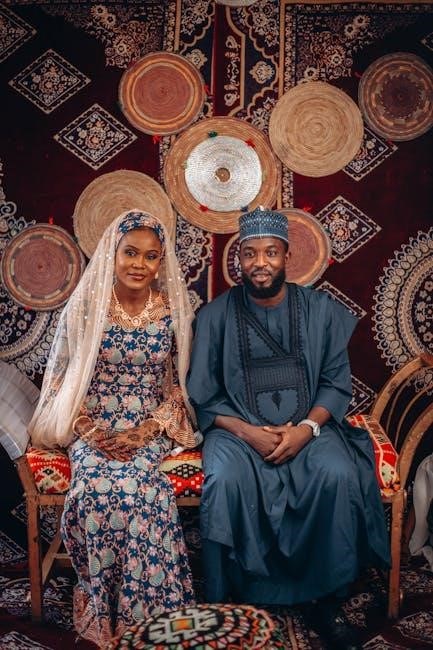
Challenges in Modern Marriages
Modern marriages face challenges like social media intrusion‚ work-life balance struggles‚ and financial pressures‚ which can strain relationships and test commitment‚ as discussed in The Art of Marriage PDF.
Impact of Social Media and Technology
Social media and technology have profoundly influenced modern marriages‚ creating both opportunities and challenges. While platforms like Instagram and Facebook can foster connection‚ they also often create unrealistic expectations and promote comparison. The constant availability of technology can lead to distractions‚ reducing quality time between partners. Additionally‚ the rise of digital communication sometimes replaces meaningful‚ face-to-face interactions‚ potentially leading to emotional detachment. The Art of Marriage PDF highlights the importance of balancing technology use to maintain intimacy and trust‚ emphasizing that true connection requires intentional effort in a digitally driven world.
Work-Life Balance and Financial Pressures
Modern marriages face significant challenges from work-life balance and financial pressures. The demands of careers often leave little time for emotional connection‚ leading to strain. Financial stress‚ such as debt or income disparities‚ can create tension and conflict. The Art of Marriage PDF emphasizes the importance of teamwork in managing these challenges. Couples must communicate openly about priorities‚ delegate responsibilities‚ and support each other through life’s demands. By fostering mutual understanding and cooperation‚ partners can navigate these pressures while maintaining a healthy‚ loving relationship‚ ensuring that financial and professional burdens do not overshadow their commitment to one another.
The Art of Marriage PDF offers timeless wisdom‚ reminding us that marriage requires dedication‚ communication‚ and mutual respect. Its insights remain relevant‚ guiding couples to build enduring‚ fulfilling relationships.
Summarizing the Key Takeaways
The Art of Marriage PDF emphasizes that a successful marriage is built on intentional effort‚ communication‚ and mutual respect. Happiness is not automatic but cultivated through dedication. Key takeaways include the importance of valuing little gestures‚ maintaining intimacy‚ and resolving conflicts constructively. The document also highlights the need for emotional intelligence and understanding in nurturing a lasting relationship. These principles‚ while simple‚ provide a profound framework for couples seeking to strengthen their bond and create a fulfilling partnership that withstands life’s challenges.

The Timeless Relevance of “The Art of Marriage”
The Art of Marriage PDF remains a timeless guide‚ offering universal wisdom that transcends generations. Its core principles—commitment‚ communication‚ and mutual respect—are as relevant today as they were when first written. In an era where relationships face new challenges‚ the document’s enduring insights provide a solid foundation for couples seeking lasting unity. Its simple yet profound advice continues to inspire‚ making it a cherished resource for nurturing love and building resilient marriages that stand the test of time.